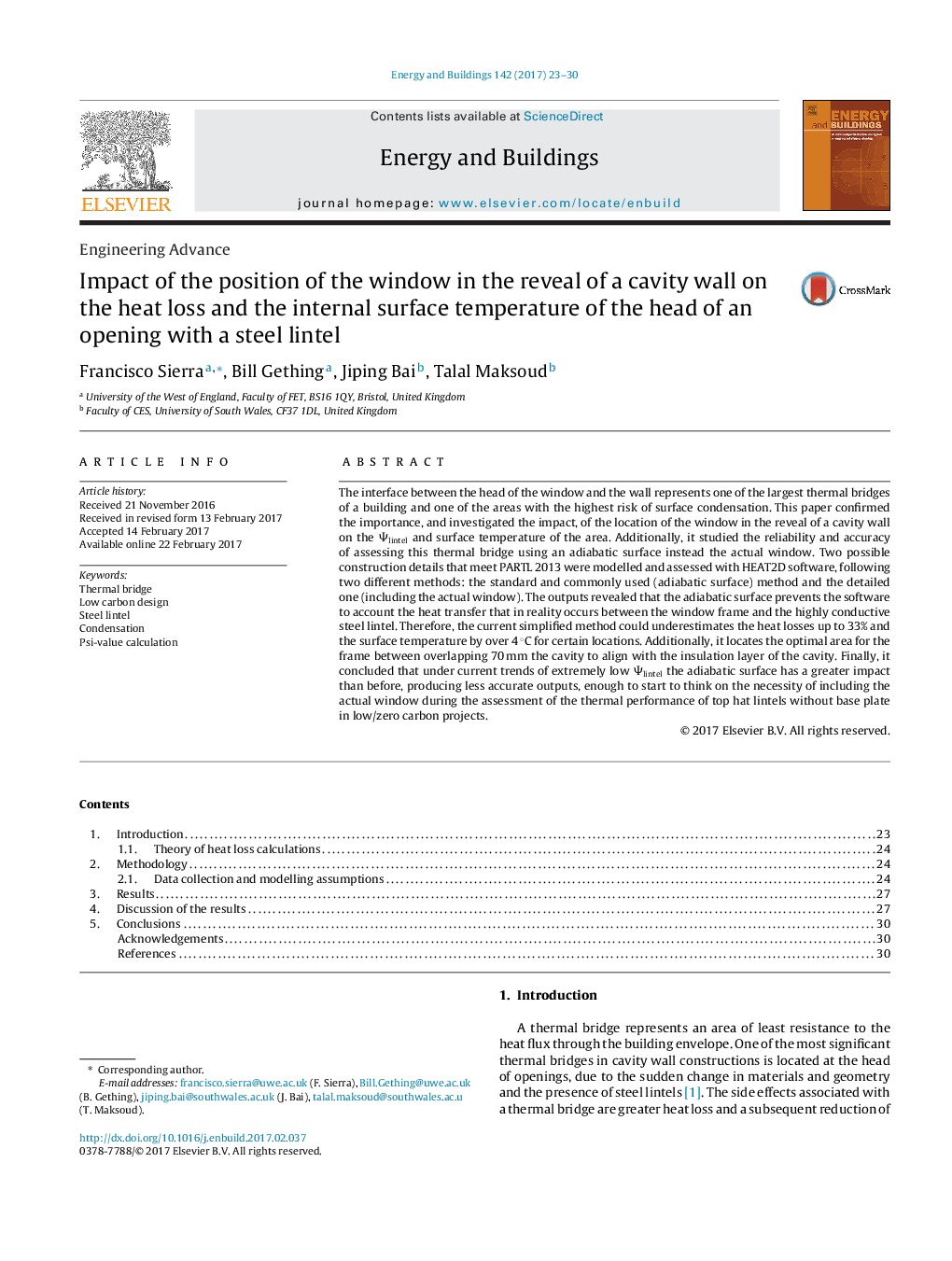| Article ID | Journal | Published Year | Pages | File Type |
|---|---|---|---|---|
| 4914222 | Energy and Buildings | 2017 | 8 Pages |
Abstract
The interface between the head of the window and the wall represents one of the largest thermal bridges of a building and one of the areas with the highest risk of surface condensation. This paper confirmed the importance, and investigated the impact, of the location of the window in the reveal of a cavity wall on the Ψlintel and surface temperature of the area. Additionally, it studied the reliability and accuracy of assessing this thermal bridge using an adiabatic surface instead the actual window. Two possible construction details that meet PARTL 2013 were modelled and assessed with HEAT2D software, following two different methods: the standard and commonly used (adiabatic surface) method and the detailed one (including the actual window). The outputs revealed that the adiabatic surface prevents the software to account the heat transfer that in reality occurs between the window frame and the highly conductive steel lintel. Therefore, the current simplified method could underestimates the heat losses up to 33% and the surface temperature by over 4 °C for certain locations. Additionally, it locates the optimal area for the frame between overlapping 70 mm the cavity to align with the insulation layer of the cavity. Finally, it concluded that under current trends of extremely low Ψlintel the adiabatic surface has a greater impact than before, producing less accurate outputs, enough to start to think on the necessity of including the actual window during the assessment of the thermal performance of top hat lintels without base plate in low/zero carbon projects.
Related Topics
Physical Sciences and Engineering
Energy
Renewable Energy, Sustainability and the Environment
Authors
Francisco Sierra, Bill Gething, Jiping Bai, Talal Maksoud,
